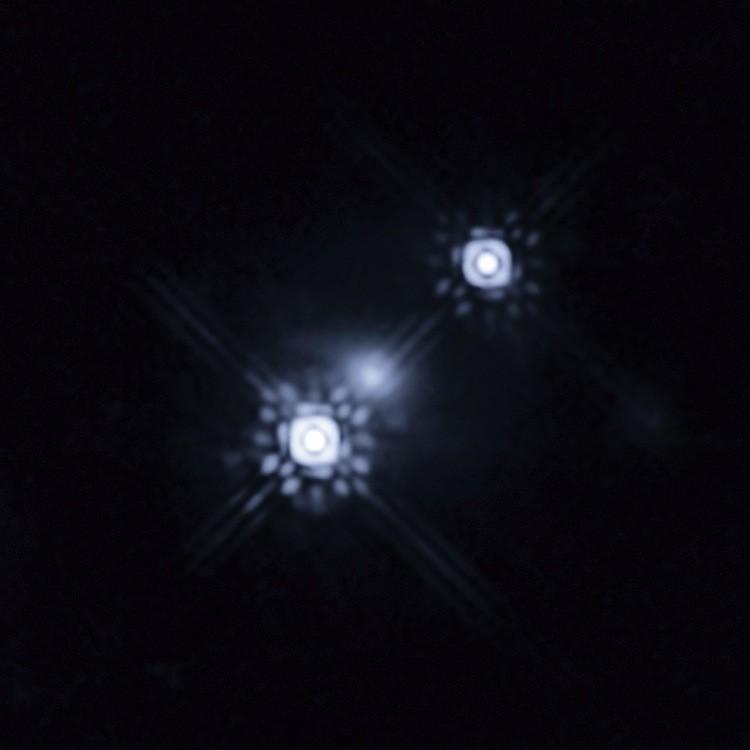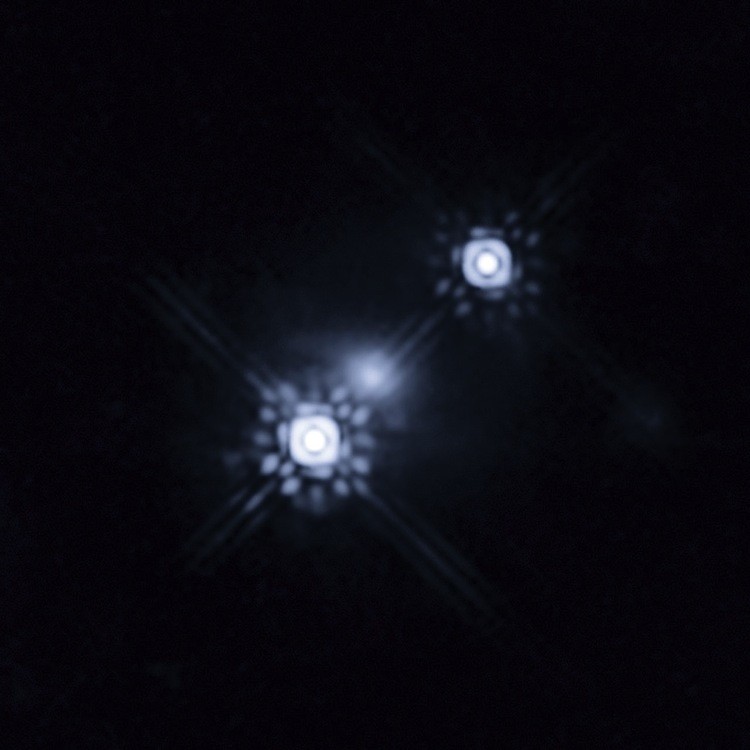The Hubble Space Telescope (HST) has directly observed a luminous disc of matter being sucked into a supermassive black hole at the heart of a remote galaxy.
Such quasar accretion disks are found orbiting huge black holes, sending out intense radiation as they reach high temperatures.
A team of astronomers studied the disc’s size and colors to determine its temperature variation using a technique called gravitational lensing to achieve precision equivalent to observing individual sand grains on the moon’s surface.
“A quasar accretion disc has a typical size of a few light-days, or around 100 billion kilometers [62 billion miles] across, but they lie billions of light-years away,” said lead researcher Jose Muñoz in a press release.
“This means their apparent size when viewed from Earth is so small that we will probably never have a telescope powerful enough to see their structure directly.”
A disc’s temperature increases closer to the black hole, sending out bluer colors as the matter gets hotter.
The researchers discovered that the disc spans 4 to 11 light-days or 100 to 300 billion kilometers [62 to 186 billion miles]. Despite the range in values, this measurement is very accurate considering the object is so distant.
Previously, the inner structure of quasars has been extrapolated based on theory. These direct observations were made with an innovative gravitational lensing method.
The team used the gravitational effects of stars in an intermediate galaxy to magnify light emitted by different regions of the quasar, rather like a scanning microscope.
“This result is very relevant because it implies we are now able to obtain observational data on the structure of these systems, rather than relying on theory alone,” Muñoz said.
“Quasars’ physical properties are not yet well understood,” he added. “This new ability to obtain observational measurements is therefore opening a new window to help understand the nature of these objects.”
The findings were published online in the Astrophysical Journal on Nov. 4.






